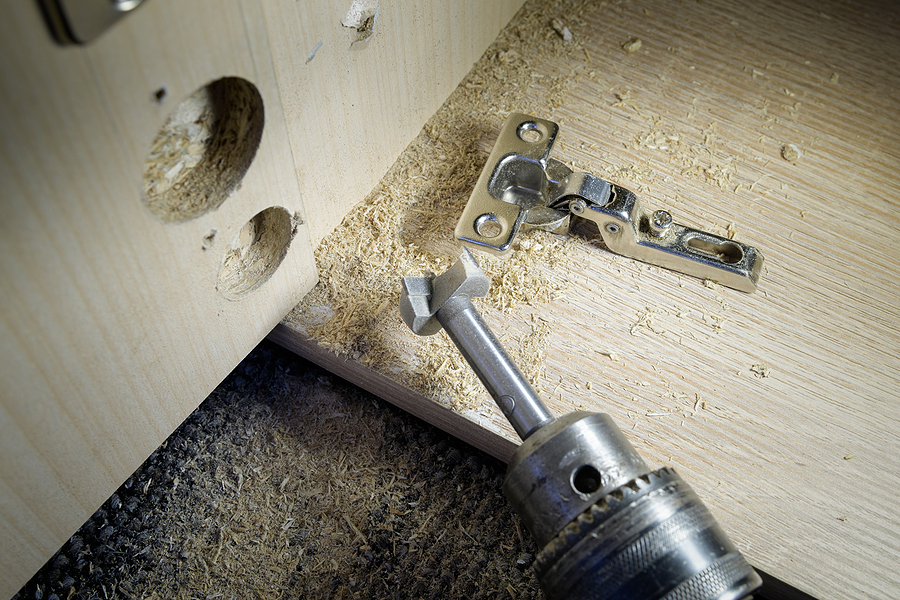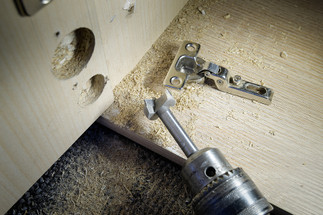Posted by Sandpaper America on Jun 10th 2022
The Simple Way to Refinish Laminate Cabinetry
You might assume that laminate cabinets can’t be refinished, but this is far from the truth! There is no need to replace laminate cabinets because they are old or outdated. Instead, you can simply refinish them! Instantly brighten, modernize, and alter the look of your kitchen’s laminate cabinetry all within your budget. It is important to review the correct process for laminate cabinet refinishing in order to achieve the best possible results.
Continue reading to learn some helpful tips to get you started, including who to call when the job is too big to do on your own.

Laminate Cabinet Refinishing
If you are determined to refinish your kitchen, bathroom, or closet laminate cabinets on your own, then good for you! Take a look at the guide below to learn some of the major components and key points for these particular projects. Be sure to prepare by first gathering all the necessary supplies and tools to get the job done right. These include:
- Paint and Paint Primer (Water-Based)
- Foam Rollers
- Rolling Pans
- Painter’s Tape
- Sandpaper (240 & 150 Grit Sheets)
- Old Bed Sheets or Drop Cloths
- Disinfectant Spray
- Clean Rags
- Microfiber Cloth
- Permanent Marker
- Screwdriver
Cabinetry Hardware Tips
For an even more updated look, you can purchase and install new, more modern-looking cabinet handles. These are available for a variety of designs and prices at any hardware or home store. If any laminate is peeling or cracking, it will need to be replaced entirely. Do not proceed to refinish peeling o or cracked laminate cabinetry. However, if it is only slightly peeling in one corner or so, you can simply sand the exposed area behind the laminate, and then re-glue it with a water-proof adhesive. Use masking tape to hold it in place while it dries. This works best for small areas and corners. Once you have accumulated all the tools and supplies you need, you are ready to get started. Here’s how:
Quick Guide to Refinishing Laminate Cabinets:
First clean all of the cabinets. Dust them with the microfiber cloth to remove solids, and then follow with a thorough wipe down using the disinfectant spray. This provides stronger primer adhesion and ensures a cleaner smoother finish.
Using the screwdriver, remove each cabinet face and its handle while keeping track of where each one goes. Use the permanent marker to label each one so you will remember where to replace it later.
Place the cabinet faces on the drop cloths, making sure the edges remain exposed and accessible. Be sure the drop cloths cover enough surface area to protect the surrounding environment from paint.
Use the painter’s tape to line the inside edges of the cabinet faces to prevent paint drips. Take your time on this step to ensure accuracy.
Use the 240 grit sandpaper sheets to manually sand the cabinet faces. You may choose to use a handheld portable sander if you are familiar with its operation. Just be sure to not over-sand.
After sanding, use your microfiber cloth to wipe away the residual dust and sanding debris. Do this thoroughly and remove as much dust as possible.
Using your foam roller, apply a coat of water-based paint primer to each cabinet face. Allow this to dry completely, usually 8 to 12 hours depending on the brand.
Once the primer is applied and has dried completely, sand each cabinet face again using the 150 grit sandpaper. Remove excess sanding dust with your microfiber cloth afterwards.
Do steps 7 and 8 again.
Once both coats of primer are applied and have dried, it is time to apply your water-based paint of choice using your second foam roller. Be sure to use v-strokes during application to promote even paint marks and distribution.
Repeat step 10.
Allow the cabinets to dry for at least 72 hours before reattaching hardware and reassembling them in their rightful place. This ensures that the paint has dried and hardened completely.
Are you ready to stock up on some new woodworking materials? Contact Sandpaper America at 1-800-860-7263 (SAND) to buy high-quality, economically-priced sandpaper products for cabinetry and carpentry work. We manufacture our abrasives in-house, so you can be sure that your products are high quality. We offer custom orders, bulk orders, reoccurring orders, invoicing, and much more!
Related Posts:
Why
You Should Not Paint Over These 4 Cabinet Surfaces
Two
Primary Types of Polyurethane Finishes
Why
You Need an Edge Sander in Your Woodworking Arsenal

